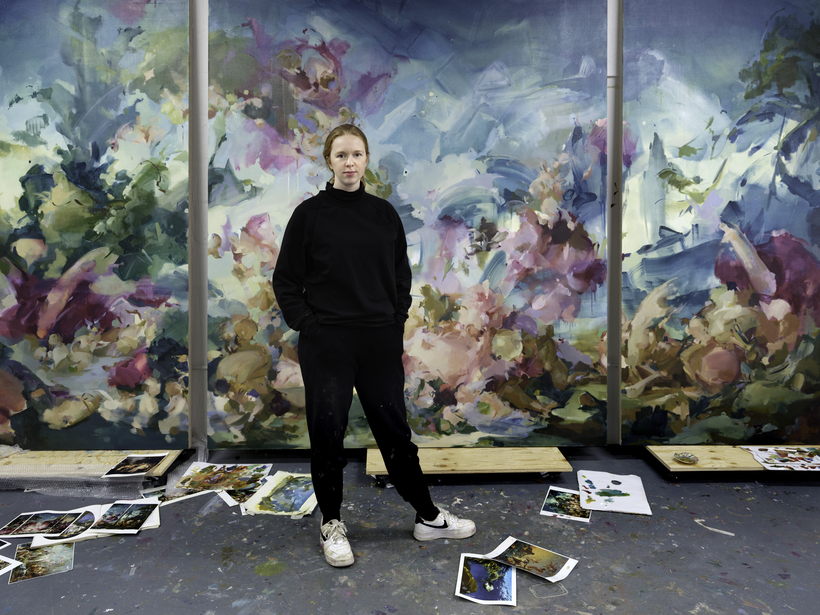In 2022, Flora Yukhnovich was one of two artists invited to take part in Oxford’s inaugural Ashmolean NOW Program. She and Daniel Crews-Chubb were each invited to create responses to the museum’s historic collection. Yukhnovich did not choose pictures from the main picture gallery or even from the world-renowned collections of prints and drawings. Instead, she was strangely drawn to room 48, a quintessential “quiet corner” on the second floor, at the back of the museum.

This room, since 1948, has been home to the Daisy Linda Ward collection of Dutch and Flemish still lifes, pictures produced in the Low Countries in the 17th and early-18th centuries. They were brought together by Theodore W. H. Ward, a wealthy paint manufacturer who collected them over a period of about 25 years, from 1920 onward, at a time when the paintings were hopelessly out of fashion and prices were attractive. Numbering 94 pictures (there were 95, but Rachel Ruysch’s masterpiece Vase of Flowers was stolen in 1949), this is perhaps the largest coming together of still-life flower paintings in the world. It was a stipulation of the bequest that the pictures would always be shown together.
These relatively small but exquisite oil paintings are hung several pictures deep in an olive-green room. Their subjects—seemingly endless flower arrangements, piles of fruits, and banquets of seafood—emerge from dark backgrounds. Are the pictures whispering in a language we no longer understand?

Much has been made of the lost and secret coded language of still-life paintings, and in this room there is a kind of strangeness, a tangible sense of something unknowable. A perfectly captured brown leaf could lead to thoughts of life’s cycle. Peaches may suggest female beauty; oysters, the origin of the world. If these pictures are a puzzle, it is one we can’t quite solve. The surface message, the amazing virtuosity that conjured these illusions of reality, is now all that is available to us.
Yukhnovich was so curious about the contents of room 48, she even filmed the paintings at night when the museum was closed. When she replayed the film in her London studio, the pictures’ darkness and shadow lent a weird presence to the works, feeding into her passion for horror films, particularly those that explore the monstrous femme: Carrie, The Witch, and Raw are favorites. And so the creative process began. In the exhibition of Ashmolean NOW’s first commissions—“Flora Yukhnovich x Daniel Crews-Chubb,” opening today—we see the bold blossom of Yukhnovich’s interest in Dutch and Flemish still-life painting, the history of women artists, and images of the primal femme in films. It’s breathtaking.

Her seven paintings are anything but still. Painterly, dynamic, and emotional, they are large-scale and intentionally overwhelming. To stand in front of one of these pictures is a little like falling into a huge basket of flowers. Downy, petal-soft confetti in various colors explode out of the canvas. Powerful brushstrokes allow the pictures to twist and turn organically between figuration and abstraction, and almost endless multiple perspectives keep the pictures fresh. The ghostly presence of plums, peaches, glassy grapes, and sensually overblown and unmaidenly blooms tie the pictures to both the mystery of the 17th-century Low Countries and the hungry femininity of 1970s horror. See them at the Ashmolean NOW. —Sarah Hyde
“Flora Yukhnovich x Daniel Crews-Chubb” will be on at the Ashmolean Museum, in Oxford, through January 14
Sarah Hyde is a London-based writer


 Discover
Discover